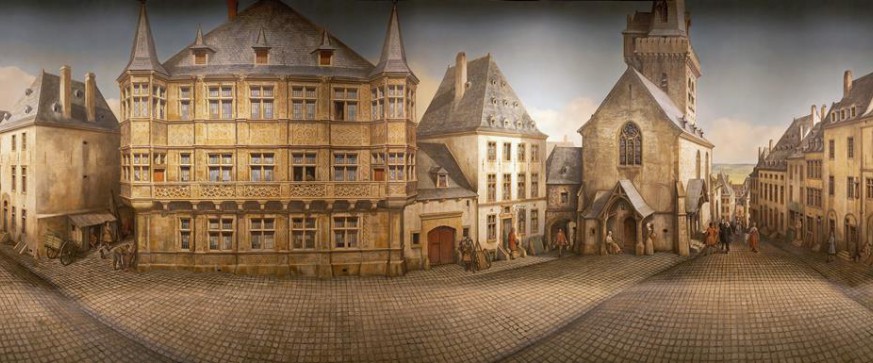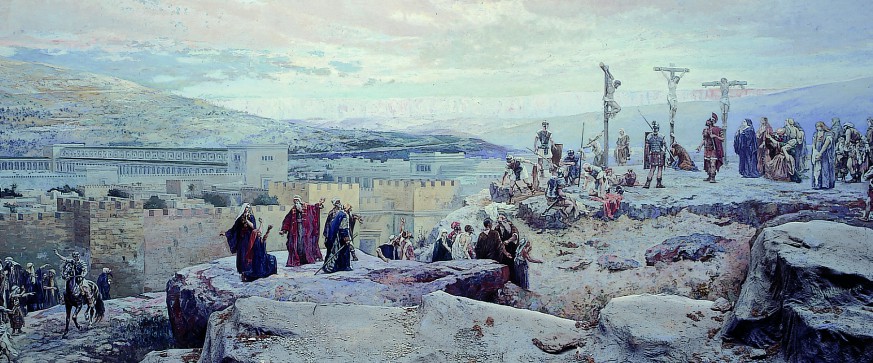This 33rd annual conference for the International Panorama Council in 2024,
organized with the EPFL Laboratory for Experimental Museology, will mark the beginning of a new mission for IPC. The new project is expected to span 2023-2026 and aims to establish the recognition of painted panoramas inside the UNESCO “Memory of the World” (MoW) program.
IPC invites heritage panorama owners and/or custodians of panorama artifacts worldwide to contribute to this new mission and thereby to the recognition of panoramas as a documentary world heritage.
The Memory of the World Programme was established in 1992 (the founding year of IPC) with the aim of facilitating the preservation of the world’s past, present and future documentary heritage, assisting universal access to documentary heritage, and increasing awareness worldwide of the existence and significance of documentary heritage and thereby fosters dialogue and mutual understanding between people and cultures.
The preparation of the application to UNESCO is a grassroots process which takes time, commitment, and resources. A project for the application was presented at the IPC General Assembly in 2023, and a commission to steer the project was identifdied.
Proposed Timeline
2023 Presentation of the project
2024 IPC member and non-member survey
2024 IPC conference with scientific exchange on the topic
2024 constitution of national groups based on eligibility criteria
2025 Preparation of national applications
2026 Submission of the application
The operational committee of this IPC commission is composed of IPC members including – Prof. Sarah Kenderdine (Laboratory for Experimental Museology, EPFL), Dominique Hanson (IPC Treasurer, former Director of the Army Museum of Brussels), and Dr. Daniel Jaquet (Laboratory for Experimental Museology, EPFL and Council member of the Foundation for the Panorama of the Battle of Murten).
Updates will be presented annually at the IPC General Assembly and will be published on this page.
If you would like more information about the Memory of the World UNESCO Recognition Project please contact the IPC Secretariat: secretariat@panoramacouncil.org
Media Archeology
The research process of gathering information for the MoW application can be understood as a form of Media Archeology. By exploring painted panoramas from a media archaeology perspective, we gain a richer understanding of the historical trajectories of media technologies, aesthetics, and cultural practices, many of which continue to influence our media landscape today. We are also able to establish the basis for UNESCO Memory of the World listing by examining these pertinent issues.
Media archaeology is a discipline that explores the history of modern media by looking at antiquated, forgotten, or neglected media forms and practices. It is a way of understanding the evolution of media and communication throughout history. From a media archaeology perspective, painted panoramas are of significance for several reasons:
Early Visual Media
Painted panoramas represent one of the earliest forms of immersive visual media. They were often created to give viewers a comprehensive, 360-degree view of a scene, which might be considered an early attempt at virtual reality. By studying these, we can better understand the historical desire for immersion and realism in media, a concept that continues to shape the development of new technologies and forms of representation.
Media Innovation
The creation and exhibition of painted panoramas involved a host of technical, aesthetic, and logistical innovations. These include advancements in painting techniques to achieve realistic perspective and lighting effects, the design of special buildings and viewing apparatuses, and the development of transportable panoramas. These innovative aspects can provide valuable insights into the dynamics of media change and technological innovation.
Narrative Techniques
Painted panoramas often used unique narrative techniques to guide viewers' experiences. For example, they might have been used in combination with spoken narration, music, sound effects, or mechanical movement. These elements allow us to explore how multi-modal storytelling has evolved and how our predecessors used available technology to create engaging narrative experiences. These narrative strategies were extended an explore by media artists starting in the early 1990s, setting a stage for new experiences to follow using digital technologies.
Cultural Practices
Panoramas were a popular form of entertainment in the 18th and 19th centuries and thus played a role in the development of cultural practices around media consumption. They were often exhibited in public places and were an event for social gatherings. Studying them can give us insights into the history of media use, public entertainment, and social behavior especially pertinent in the current quest for immersion and embodied experiences.
Mass Media & Commercialization
Panoramas were among the first forms of mass entertainment. They represent early examples of the commercialization of visual media, and studying them can offer insights into the economics of media production, distribution, and consumption, including the roles of advertising, ticket sales, and spectacle. The rise and fall of historic panoramas offer us insights into the business models of today.

.jpg)

.jpg)
.jpg)
.jpg)
.jpg)


.jpg)
.jpg)






.jpg)
